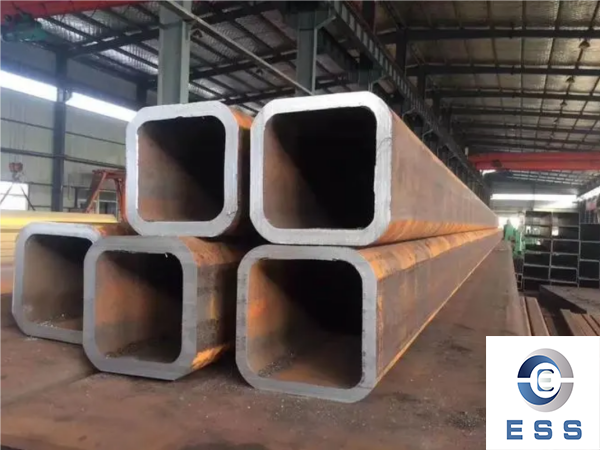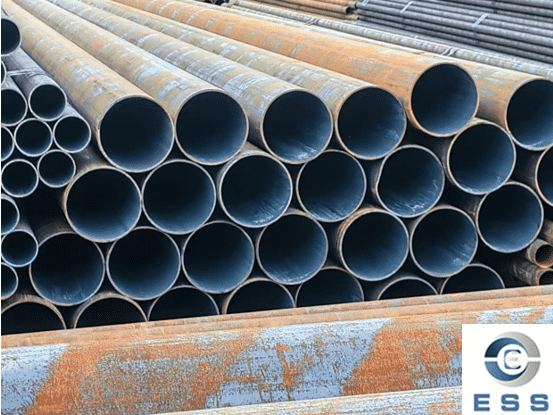Production technology of large diameter square and rectangular tubes
There are currently four main processes for producing large-size
square tubes and
rectangular tubes:
1. Flat plate tailor welding process
Traditional large-size square and rectangular tubes are welded from four steel plates. The advantage is that the bending process can be omitted and is not limited by wall thickness. The disadvantages are slow production speed, unstable quality, low strength, and four welds. This production process is currently rarely used.

2. High frequency resistance welding (ERW) head and tail round process
This is the basic process for producing square and rectangular steel pipes. Based on the round pipe production process of high-frequency resistance welding unit, square and rectangular hole shapes are added to the sizing machine to cool and process the round welded pipe into square and rectangular welded pipe. The advantages of this process are high dimensional accuracy and a slight increase in wall thickness at 90° bends. Regarding the shortcomings, some literature pointed out that in the process of changing from circle to square, the force on the roller is always concentrated at one point, and the stress is concentrated. Often when the wall thickness is greater than 12.7mm, micro cracks will appear during the bending process of the profile, and in severe cases, it may even break. In addition, when producing small batches and multiple varieties, the number of roller changes is high.
3. High-frequency resistance welding (ERW) direct square forming process
This process uses a special forming device to bend the strip directly into a square rectangular tube. Its advantage is that it effectively solves the problem of micro-cracks at the corners of thick-walled, high-strength products. At the same time, when producing small batches and multiple varieties, the number of roll changes is less; the disadvantage is that the wall thickness at the 90° bend becomes thinner.
4. Submerged arc welding (SAW) two-channel steel butt welding process.
This process is to bend the coils into "[" shapes respectively, and then use submerged arc welding (internal and external welding) to butt-weld the two "[" shapes into double welds. Sew square rectangular tube. This forming process has two characteristics: first, partitions (hard plates) can be added inside square and rectangular tubes; second, the cross-section range can be from 200mm×200mm to 1000mm×1000mm, breaking through the high-frequency resistance welding (ERW) welded pipes. . The cross-section can only reach the limit of 550mm×550mm. However, its disadvantage is that the double welding process uses butt welding, and the post-weld off-line heat treatment and correction process are more complicated; at the same time, because it is still pre-rolled, the maximum wall thickness generally does not exceed 20mm; and, because the two welding seams are All on the central section, which is very disadvantageous when used as a stressed member to subject the weld to shear forces.













 Eastern Steel Manufacturing Co.,Ltd not only improve product production and sales services, but also provide additional value-added services. As long as you need, we can complete your specific needs together.
Eastern Steel Manufacturing Co.,Ltd not only improve product production and sales services, but also provide additional value-added services. As long as you need, we can complete your specific needs together.










